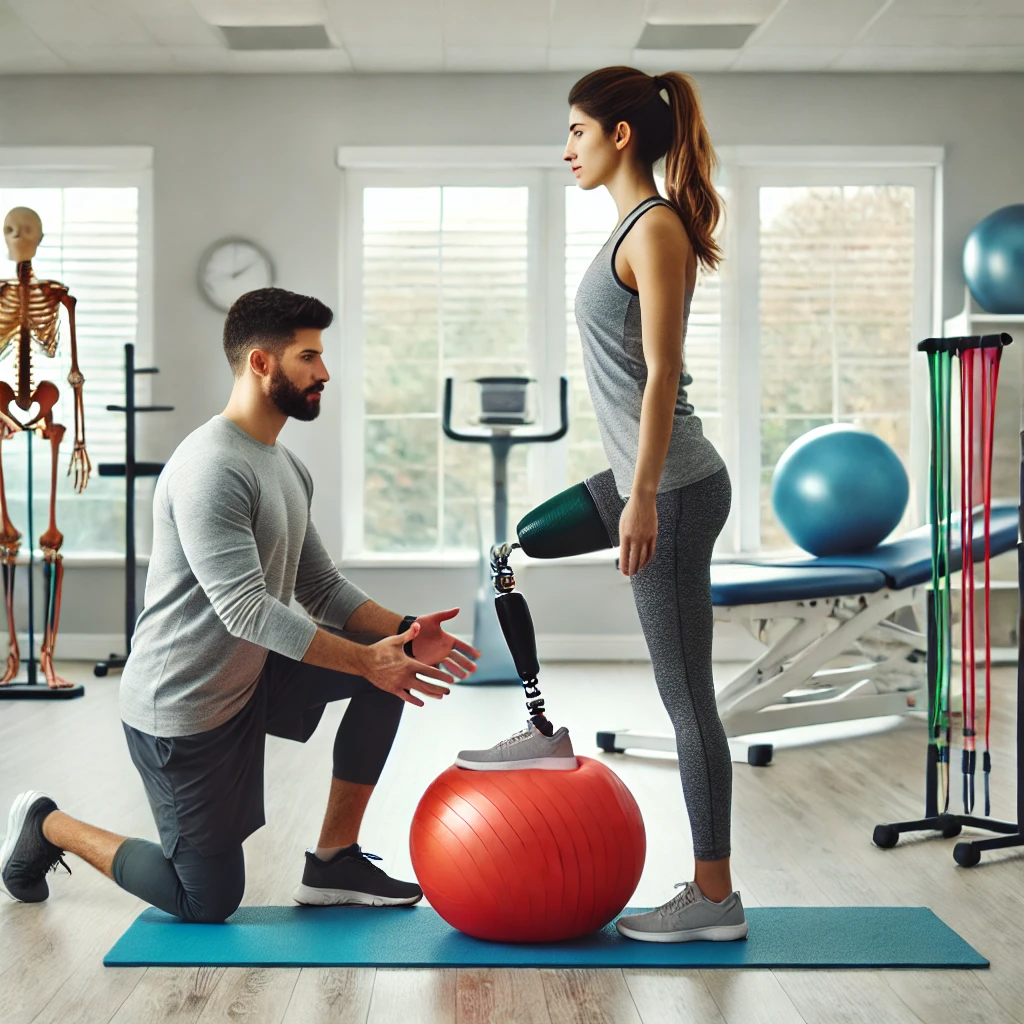Enhancing Mobility and Function in LLA Patients Through Exercise
Improving Mobility and Function in Adults with Lower Limb Amputation: The Role of Physical Activity and Exercise Lower limb amputation (LLA) significantly affects mobility and independence. However, research shows that physical activity and exercise can help adults with LLA improve fitness, mobility, and functional capacity. This blog explores the benefits of physical activity (PA) for LLA patients, the most effective exercises, and the minimum exercise required for improvements. What is Lower Limb Amputation? Lower limb amputation is the removal of part or all of one or both legs. It can occur due to injury, infection, or conditions like diabetes. Recovery post-amputation is challenging. Individuals may experience mobility issues, loss of balance, and reduced functional capacity. Rehabilitation is essential for regaining independence, and exercise plays a vital role. Significance of Physical Activity for Adults with LLA Physical activity benefits health in various ways. For people with LLA, it can improve mobility, strength, and cardiovascular fitness. Exercise helps reduce the risk of secondary conditions like heart disease, obesity, and depression. It also improves balance, walking speed, endurance, and functional capacity. This allows individuals to regain independence and improve quality of life. Every step toward better mobility counts, and physical activity makes a real difference in recovery. What Does the Research Say About Physical Activity for LLA? A systematic review explored the effects of physical activity on adults with LLA. The review included 23 studies with 408 participants. Researchers assessed exercise interventions and their impact on fitness, mobility, and functional capacity for people with LLA. Which Exercises Show the Most Benefits? The review found that mixed exercise programs—combining aerobic exercises with strength or balance exercises—were the most effective. These exercises improved balance, walking speed, endurance, and transfer ability (moving from sitting to standing). Aerobic exercises like walking or cycling boost cardiovascular health and endurance. Strengthening exercises, like leg lifts, build muscle strength, and balance exercises help prevent falls. While mixed exercise programs produced the best results, the review also found that strengthening exercises alone improved functional capacity and mobility. However, more studies are needed to assess other exercise types. Frequency, Duration, and Intensity: How Much Exercise Is Needed? The research showed that 1-3 exercise sessions per week, lasting 20-60 minutes each, were sufficient to improve balance, walking speed, endurance, and transfer ability. Regular moderate exercise, without the need for intense sessions, can make a big difference. A few sessions per week can lead to noticeable improvements in mobility and daily functioning. What Was Missing from the Study? While the review addressed the benefits of exercise on balance, walking speed, endurance, and transfer ability, it also noted gaps in research. There was low confidence in the effects of exercise on cardiorespiratory fitness, flexibility, muscle strength, and overall functional capacity. Many studies did not explore these areas thoroughly. Future research should focus on how exercise impacts these important health factors to provide a more comprehensive understanding. Read More How Exercise Enhances Mobility and Functional Capacity Exercise improves several key factors related to mobility and functional capacity: Why More Research Is Needed While the research indicates that exercise improves mobility and functional capacity in adults with LLA, there are still many unanswered questions. Most studies focused on small participant groups and did not examine the effects of exercise on other important factors like flexibility and muscle strength. The optimal type, duration, and intensity of exercise for people with LLA remain unclear. Some studies suggest that a combination of aerobic and strength training exercises is most effective, but more research is needed to confirm this and explore other approaches. Long-term benefits of physical activity for LLA patients should also be studied more thoroughly. For More Details Visit Here Conclusion: The Power of Exercise for LLA Recovery Exercise is a critical part of rehabilitation for adults with LLA. It improves balance, walking speed, walking endurance, and transfer ability. The best results come from mixed exercise programs that combine aerobic, strengthening, and balance exercises. Adults with LLA don’t need intense exercise regimens to see benefits. Just 1-3 sessions per week of moderate exercise can lead to meaningful improvements. While more research is needed to understand the full impact of exercise, physical activity has the potential to transform the lives of people with LLA. Proper exercise helps them regain independence and improve quality of life. With tailored exercise programs, individuals with lower limb amputation can lead healthier, more fulfilling lives.

